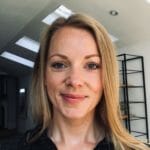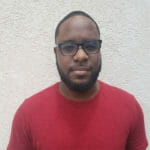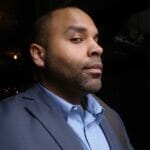In this Prioritised AMA, we put your questions to Mina Radhakrishnan – co-founder of Sydney based property tech startup, :Different.
Starting her career as a business analyst for Goldman Sachs, Mina later joined Google as a member of the Associate Product Management program, before moving to ModCloth as one of their first product managers.
Mina’s impressive product management record doesn’t end there. As the very first product manager at Uber, she was employee #20 when the UI was still a big green button. While at Uber she led initiatives such as new driver on-boarding and the addition of other types of car services. As one of the five inventors of Uber’s surge pricing, she is a joint holder of its 2013 patent.
Mina’s also served as an entrepreneur-in-residence at startup investment firm Redpoint Ventures, and as a Product Management Special Adviser to Cowboy Ventures. She advises, mentors and works with portfolio companies on product questions, both big and small.
Topics & Questions
- What led you to build a startup?
- What triggers the decision to hire your company’s first product manager?
- What’s your advice for people who are the first product leader working with a founder in a company?
- What’s your advice for people working remotely?
- What was the main thing you focused on to enable you to take the leap into being a founder?
- Does having product managers working alongside dev teams add value?
- Do you see similarities in product leadership roles and venture capital roles?
- Should product managers become domain experts, or work across multiple domains?
- Can product management skills be applied to any product?
- When hiring, what characteristics are you looking for in product managers?
- What and who you are learning from and feeling inspired by at the moment?
- How do you deal with developers who just want to be buried in code?
- How do you prevent things like OKRs and aligning to OKRs from restricting innovation and creativity?
- Product is still a growing industry in the APAC region. What do you think about the level of product management talent available in the area?
Please note: Answers have been edited for clarity
What led you to build a startup?
You don’t actually know what you’re going to do until after you’ve done it. Had you asked me five years ago if I’d be a co-founder of a startup in Australia, in the tech space, I’d be like, “me?!”. It’s a strange journey but I’ll start at the beginning. My background is originally in engineering, my degree is in computer science, and I was a Java and Blackberry apps developer at Goldman Sachs, back in the day when that was cutting edge technology. At Goldman, I really enjoyed what I was doing and started branching out into corporate ventures as I was actually thinking about what’s the next generation of like finance apps on mobile for investment bankers.
The thing that I came to realise is that at the end of the day, Goldman is an investment bank and no matter how good the technology is or what it’s doing to improve the business, or improve the lives of people in the business, at the end of the day it’s not the thing that’s making that company money. And so you’re not the person driving the business forward and so I really wanted to be in tech. I thought my dream in life was to be a management consultant. And so, I went to business school, never made it to the first day of class, dropped out of business school, moved to California and started working at Google in the APM programme, which was a fabulous experience. I did that for about three years, got bitten by the startup bug.
What I really loved about Google is that I was working at a technology company […] but I really wanted to try something small and so I left to join a company called ModCloth. I was their first product manager and it was an eCommerce fashion space. This was the early days of mobile and I thought ‘hey this is gonna be like a really fun and cool thing to do.’ I was there for a year. I learned a tonne about what eCommerce is like, and more about tax and sales tax than I ever wanted to know, and I felt like I’ve come full circle in my career where, again I was working in tech, but ultimately what I was doing wasn’t driving the company forward right because at the end of the day, with a fashion eCommerce company, the question is, did you pick the right merchandise?
I knew that I really loved working tech, I just had to find a startup that was much more focused on how product is really driving this forward. A friend of mine introduced me to Travis [Kalanick]. I had a long conversation with him and he was like ‘why don’t you come to the office on Monday morning and have an interview with us. I’m looking for a product manager’. That company, of course, was a small startup at the time, known as Uber. It was about 20 people. There I was the first product manager, and it was a wild, wild ride. I was there for about four years, and it was an incredible experience.
After that, I was trying to figure out ‘what do I want to do?’ I didn’t want to do a big company, I didn’t want to be an early employee in a small company again and then build it up, I’d done that several times – it was fun but I didn’t want to do it again. But I knew I loved product, I knew I loved tech, I knew I loved startups. It felt like there were two distinct paths. One was either go be an investor and see what it was like to be a venture capitalist and the other was be a founder. So I thought, well I don’t really know anything about what it means to be an investor […] I wanted to go be a founder, so I was a founder with no ideas!
What triggers the decision to hire your company’s first product manager?
It’s interesting running product, being the founder of the company and being the CEO as well. A lot of it is around time, I was like oh my god, I am not making the most out of my engineering team. I’m actually getting in their way! I think the other thing was we really built out a proper full design programme and we’ve got 11 engineers and three designers so I said just cannot be the person who’s responsible for getting down into the weeds – all I’m going to do is block my entire team from being able to build.
So we moved to a cross-functional structure with product, engineering, and design all working together. If you want to move forward, you need a product manager. It’s great to have a small team initially as you’re just trying to do things but the minute that your areas of ownership start getting large enough that you actually need to have groups of people working on it. You just can’t have your product manager spread out across many things especially when that person is also the co-founder of the company and is responsible for all these other divisions too – it just doesn’t work.
What’s your advice for people who are the first product leader working with a founder in a company?
It’s been interesting being on this side of it. I have to give a lot of credit to Travis [Kalanick] because I think that as much as he’s a CEO who really wanted to drive vision and product, he also gave me a tonne of autonomy, and I learned a lot from that. If you’re hiring people to come in and run areas and take things off your plate, you actually have to give them the plate. You do have to let go to some extent and that’s not always an easy thing to do.
I think the key for me is establishing frameworks and processes. One thing that it’s important to have is what I call a ‘product outline’. I don’t believe in massive requirements documents but I also am not a believer in “we’ll just do everything agilely and iteratively and we’ll figure it out along the way in our project management tool.” We have a remote team, we have product managers in Sydney, we have engineers in Colombo, we’ve got designers in Sydney and designers in Colombo, so we need to have strong written communication. So our product outline template is in some ways similar to Amazon press releases. It’s clear, it’s defined, it’s very much about business value and user values and it’s got a fairly defined set of how we want to do things. We’ve built a process around how we do sprints and how we work through them and how engineers come together.
The other big thing for me is that when we’re working on major projects, I always start that out with a team view on principle so that when we come back to making decisions, there’s a framework that’s built-in. For example, we’re in the process of rebuilding one of our core products, it’s really the workhorse of the company. One of the key things we did is we built principles of this product and it was a big brainstorming session where we all came together. And we came away with a very clearly defined set of principles. So now I’ve got all these teams are just going and building on this product and I don’t worry about because I know we’re all coming back to a commonplace.
Finally, there is this concept of decisions as one-way doors versus two-way doors. There’s a lot of two-way door decisions where it’s okay to just do them, but there are some decisions that are one way where we’re definitely going down this path. That’s really the biggest thing that I try to work with my team on is “Is it a one-way door or is it a two-way door?” If it’s a one-way door, and it’s a big deal, we probably need to have a discussion. But if it’s a two-way door – go ahead and keep me posted and we’ll see how it goes.
What’s your advice for people working remotely?
We’ve always had a fairly flexible arrangement around how people work because we have teams in Sydney, Colombo, Melbourne, and Brisbane so we’ve always had to deal. I actually just published a slack etiquette guide and it’s actually in the same format as my product outline. It’s small things that allow us to work more productively. We send 7000 messages a day on Slack so maybe we should really think about what we send.
The written communication piece has always been such a critical thing for us, especially because, while our Colombo team speaks English well, it’s not always everyone’s first language, and when that’s the case, written communication is very important and you just have to put a lot more time and attention to it. We also have these fun things we do as well like virtual wind downs on a Friday afternoon, things like that.
What was the main thing you focused on to enable you to take the leap into being a founder?
One is that I didn’t want to build a pure software product. I really wanted to do something that had connections to the physical world because I enjoy that. The second thing is I didn’t want to do something that was about a luxury or an affluent kind of group. I wanted to build an everyman, everyday product. The third thing is that I wanted to have a really clear way to be able to sell and build this product. Sometimes I think you can have ideas where you think, we’ll figure out the monetization strategy later on and that just doesn’t work for me. I wanted to make sure that I was working on a company where I understand where this is going to go.
Does having product managers working alongside dev teams add value?
We can’t do anything by ourselves. We need to work with other people to get things done. I don’t really believe in remote or outsourcing product development. Our engineers in Colombo and our entire team are full-time employees. They don’t have to work in the same office but to me there’s no difference between our employees who are in Melbourne or Brisbane or employees who are in Colombo. I fundamentally believe that co-location is great if you can swing it but it doesn’t always work. I don’t believe that you can create great products without having product design and engineering, working together tightly. I think that for different kinds of products some teams will take more of the lead on the role than others. For example, if you’re building a complex machine learning system I expect that the technical lead is going to have much more say than the designer or product manager. But if you’re building a design system, the designer and the engineers are going to have much more say on that than the product manager. If you’re building a feature for your sales team, then I think the product manager plays a larger part. I think that you need all three of these teams working together like the three legs of the stool. I don’t believe that you can do product development without product, design and engineering being totally in sync. If you outsource all of those things to people that aren’t in control, I don’t think you end up with the best products.
Do you see similarities in product leadership roles and venture capital roles?
Yes. One thing that was really fun about being in the VC world is that it’s a bit of an intellectual candy shop. Every day you’re learning about a new industry, and I think that like a good product manager, you become very good at becoming subject matter experts quickly. That’s a great similarity – one where you’ve got to pick up on ‘what’s the framework by which I’m going to evaluate this industry’ versus ‘what’s the framework by which I’m going to design this product’. That concept of building frameworks and coming up to speed on industries or subjects or areas that you don’t know much about very quickly – that’s a good parallel.
But there are differences. You have to unlearn some of the things that you do because, in an investor role, you’re not on the details, you can’t tell a company what to do. But in product you really get down to the details. You know exactly how that button works! But in a board meeting, you have to be strategic, you have to be thinking about the North Star at a high level. Whereas a product manager is up and down a little bit – you think about your roadmap on a quarterly basis and then you’re thinking about features and you can go diving further into the bug levels. You’re moving up and down continuously. But at an investor perspective, you’re not. You have to focus on the top levels because that’s the nature of the role, you’re not going to get to know the details so there’s a lot less moving up and down the ladders in the VC space.
Should product managers become domain experts, or work across multiple domains?
It’s kind of like acting – you don’t necessarily want to get typecast. If you spend 15 years working at a SaaS company in a product management role, it will be harder if you want to try to move into a consumer space than if you have a wider varied range of experiences. But, if you love SaaS product management, that’s what you should do! For me, personally, I like to move around a lot and so I feel like I’ve learned a lot from doing all these various things. Each of them has helped me in being a holistic product manager. But at the end of the day, you do you!
When hiring, what characteristics are you looking for in product managers?
For companies like :Different: and Uber, the kind of product manager I’m looking for is somebody who is very willing to go deep into operational processes and logistics and you have to think about the real world stuff. For example, one of the teams I’m working with is thinking about how to make the process of dealing with maintenance in a rental home better. You can develop all kinds of software all day long, but actually what you need to think about too is what is the ideal operational process. For example, you’re not going to build an app for a tradesperson that they’re going to go download and log into. But you are going to do that for a tenant. So how do you go and bring all of these things together and what’s the right process by which someone internally should approve review requests? You actually have to really think and work very closely with operations managers and your logistics teams in terms of how they build that.
Whereas if you’re working in a company that is very API focused, for example, a payments API, then the people you are going to be working with are getting much more technical so the needs of a product vary.
Broadly speaking, there are four categories of product management roles. There’s the operations product manager. There’s the technical product manager. There’s the design product manager. And then, to some extent, there’s the marketing and business product manager. I don’t love that categorization but it’s a nice rough way to look at it, and across all of these things I think there are a few core skills that really apply across all bases.
The first is communication. I just cannot emphasise enough how much good communication is a driver of great products. And that is written communication, oral communication. It’s being able to speak to a CEO, the most junior person or the company or an owner who doesn’t use technical products much. Whatever it happens to be, you have to find a way to work and deal with all of those things.
I really believe in written communication because I think that writing clarifies things when you are forced to put them down on paper, or a Google Doc! You have to be clear and succinct about it and so I think that really strong communication skills are critical, especially in a product manager role because you have to be able to persuade, argue, and say no. You have to say no and still make people like you at the end of it.
The second thing is very strong analytical and technical skills. And what that means is, you’re often confronted with mess, and with chaos, and need to bring order to chaos. You have to be able to say, ‘ok, well what is the scope and scale of this problem from a quantitative perspective and from a qualitative perspective? How might I turn this into something manageable?’.
The third is product vision or product insight – being willing to understand how and why things work. And I think that that’s one of the most important questions that you can ask is why? It can be a bit annoying at times but I often find myself arguing with myself about ‘Why am I doing this?’ and playing devil’s advocate because the better you are at being able to answer that question, the more confident you will be in the solution that you’ve come up with.
What and who you are learning from and feeling inspired by at the moment?
I’m reading this book called The Messy Middle by Scott Belsky. It’s about that middle phase of start ups, when you’ve got something and you’re still around – hooray! I really really have enjoyed that, I think it’s great.
I also think it’s important to find inspiration in lots of different places. And I just think that you can’t always just be relying on tech gurus. I actually read a lot of fiction, and my reading diet is like 90% fiction and 10% nonfiction. The reason I love fiction so much is because I so firmly believe in writing, and that you actually need to see what great prose is like to be able to pull it together. It also helps me think about connections around things that I wouldn’t have thought about before.
And then in terms of watching I’m a huge fan of Top Chef. I will just watch episodes on repeat. I just think it’s so awesome, they’re so creative. And the challenges! They’re told: ‘There’s a vending machine, make something great.’ And then they use Cheetos and peanuts and Doritos to create this incredible thing!
There are so many sources of inspiration that are not just old white dudes in tech, and we should be looking for all of those.
How do you deal with developers who just want to be buried in code?
It’s partly figuring out what the culture of your company is. There are developers who just want to be buried in code all day long, and I definitely think there are companies for that.
I generally believe that people are motivated by impact. The more that you can do to explain impact to somebody in terms of impact on the business and how it works, the more motivated they are. It’s about helping product management, ultimately bringing value to every role in the company because I think product management is a glue, it brings together people. You can explain to a developer why this is going to matter to X company business metric and this means that they will care so much more.
How do you prevent things like OKRs and aligning to OKRs from restricting innovation and creativity?
I’ve never felt that OKRs get in the way of innovation and creativity, to be honest, and I think it’s because in OKRs, the O is inspirational and aspirational, and the KRs are very hard to argue with. An objective might be: ‘create a world-class onboarding experience for our first-time users’. It’s vague and aspirational and inspirational because that’s really what you want. You want people to feel excited. The KR is then something like: ‘keep our onboarding survey percentage above 90%’. And, that’s the key, it’s that you’ve established a way you’re going to track it, you know the general outcome and feeling that you want to get out of it. And then everything else is all about the details.
Product is still a growing industry in the APAC region. What do you think about the level of product management talent available in the area?
It’s been hard. I spent a long time looking for my first product manager but I think there are a couple of key things that are good indicators that the region is changing and growing. One is just that there are more startups, and there are more startups getting more successful.
It’s also good to have immigration to different countries because you’ve got to see that movement. Whatever people want to think of Silicon Valley and tech companies at the end of the day, they’ve been incredibly successful and they’ve been doing this for a long time. There’s a lot to learn. And so I think that you need to have some of that, you need to have some of those cultures and barriers being crossed in order to be able to do that. The reality is if you just have more experience you’ve just seen or been around for longer.
One challenge today is, there’s a bit of title inflation, which I think is a bad thing. I see people who are senior product managers, and they’ve had three years of experience. That is not a senior product manager by any stretch of the imagination. So that’s an arms race because when some companies started just giving title, everybody has to otherwise nobody wants to come. I tried to be very strict about not doing those kinds of things.
















